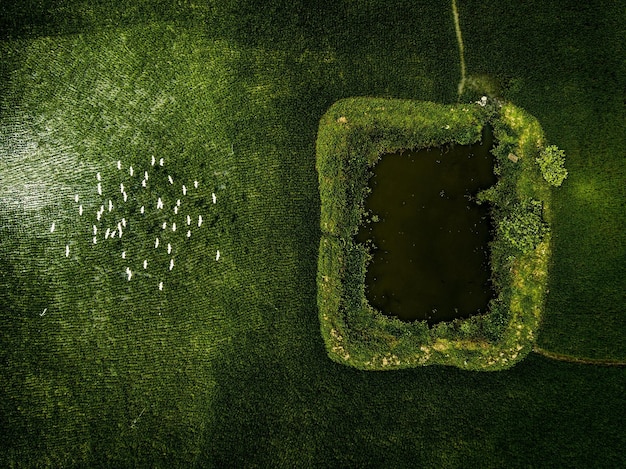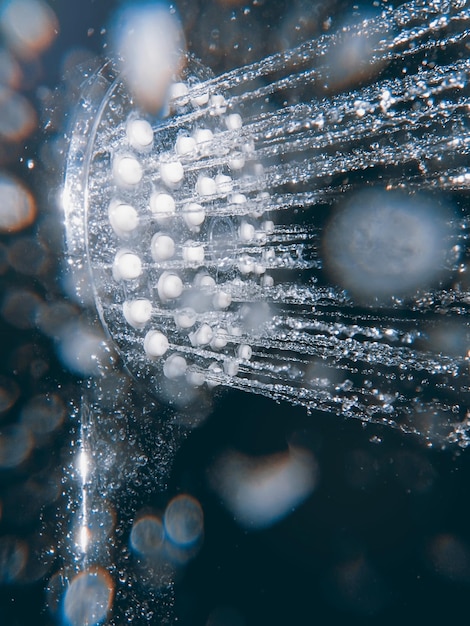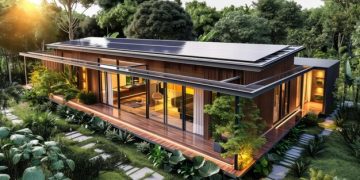Water Conservation: Strategies to Cut Your Bill by 15% in 2025

Water Conservation Strategies: Reducing Your Water Bill by 15% in 2025 requires a multi-faceted approach, including fixing leaks, installing water-efficient appliances, modifying landscaping, and changing personal habits to minimize water consumption and lower utility costs.
Are you looking for ways to save money and help the environment at the same time? Learning about water conservation strategies: reducing your water bill by 15% in 2025 can be a great starting point. With some simple changes at home you can greatly reduce your water consumption, and start saving money today.
Effective Water Conservation Methods for a Sustainable Future
Water conservation is becoming increasingly important as populations grow and water resources become more strained. By implementing effective water conservation methods, we can ensure a more sustainable future for ourselves and generations to come. Let’s dive into some strategies you can incorporate into your daily life to reduce your water bill and conserve this precious resource.
There are many ways to conserve water, from fixing leaks to making lifestyle changes. The goal is to use less water without sacrificing comfort or quality of life. Every little bit helps, and when we all do our part, the collective impact can be significant.
Fixing Leaks
One of the easiest and most effective ways to conserve water is to fix any leaks in your home. Leaky faucets, toilets, and pipes can waste a significant amount of water over time.
Installing Water-Efficient Fixtures
Replacing old, inefficient fixtures with water-saving models can greatly reduce your water consumption. Look for WaterSense-certified products, which are designed to use less water while maintaining performance.

- Check faucets and pipes regularly for leaks and repair them promptly.
- Listen for running toilets and address any issues with the flapper or fill valve.
- Consider hiring a professional plumber to inspect your plumbing system and identify hidden leaks.
By diligently addressing leaks and investing in water-efficient fixtures, you can significantly reduce your water usage and contribute to water conservation efforts. These simple steps not only save water but also lower your water bill.
Landscaping for Water Conservation
Your yard can be a major water consumer, especially during the hot summer months. However, by making some smart landscaping choices, you can reduce your water bill while maintaining a beautiful and thriving outdoor space. Let’s explore some landscaping techniques that promote water conservation.
Water-wise landscaping, also known as xeriscaping, focuses on using drought-tolerant plants and efficient irrigation methods to minimize water use. This approach not only saves water but also reduces the need for fertilizers and pesticides, making your yard more environmentally friendly.
Choosing Drought-Tolerant Plants
Selecting plants that are native to your region or well-adapted to dry conditions is a key aspect of water-wise landscaping. These plants require less water to thrive, reducing your overall water consumption.
Efficient Irrigation Techniques
Using efficient irrigation methods, such as drip irrigation or soaker hoses, can deliver water directly to the roots of your plants, minimizing water loss through evaporation and runoff.
- Group plants with similar water needs together to avoid overwatering some and underwatering others.
- Use mulch around plants to retain moisture in the soil and reduce evaporation.
- Consider replacing your lawn with drought-tolerant ground covers or permeable paving.
By adopting water-wise landscaping practices, you can create a beautiful and sustainable outdoor space that requires minimal water. This approach not only saves water but also reduces maintenance and promotes a healthier environment.
Indoor Water Conservation Tips
While outdoor water conservation is important, there are also many ways to save water inside your home. By making some simple changes to your daily habits and routines, you can significantly reduce your water bill and conserve this precious resource. Let’s explore some indoor water conservation tips.
Conserving water indoors is all about being mindful of your water usage and making small adjustments to your habits. Every little bit helps, and when we all do our part, the collective impact can be significant.
Be Mindful of Shower Time
Limiting your shower time and using a water-efficient showerhead can greatly reduce your water consumption. Consider setting a timer to keep your showers short and sweet.
Use Water Wisely in the Kitchen
When washing dishes, fill the sink with water instead of letting the tap run continuously. And when cooking, use only the amount of water you need.

- Run your washing machine and dishwasher only when they are full.
- Install low-flow faucets and toilets to reduce water consumption in the bathroom.
- Collect rainwater for watering plants or other outdoor uses.
By incorporating these indoor water conservation tips into your daily routine, you can significantly reduce your water usage and contribute to water conservation efforts. Every small change makes a difference in preserving our precious water resources.
Monitoring and Adjusting Water Usage
To effectively conserve water and reduce your water bill, it’s important to monitor your water usage regularly and make adjustments as needed. By tracking your water consumption, you can identify areas where you’re using more water than necessary and make changes to improve your water efficiency. Let’s discuss how to monitor and adjust water usage effectively.
Monitoring your water usage is like tracking your spending habits – it helps you understand where your money (or water) is going and identify opportunities to save. By paying attention to your water bill and making adjustments to your habits, you can conserve water and save money.
Reading Your Water Meter
Learning how to read your water meter can provide valuable insights into your water consumption patterns. Check your meter regularly to track your water usage and identify any unusual spikes that may indicate a leak.
Setting Water Usage Goals
Set realistic water usage goals for yourself and your household, and track your progress over time. Celebrate your successes and make adjustments as needed to stay on track.
- Use a water usage calculator to estimate your water consumption and identify areas for improvement.
- Compare your water bill from month to month to track your progress and identify any trends.
- Consider installing a smart water meter that provides real-time data on your water usage.
By actively monitoring and adjusting your water usage, you can gain valuable insights into your water consumption patterns and make informed decisions to conserve water and reduce your water bill. This proactive approach puts you in control of your water usage and helps you achieve your water conservation goals.
Government Initiatives and Rebates
Many government agencies and utility companies offer initiatives and rebates to encourage water conservation. These programs can provide financial incentives and resources to help you implement water-saving measures in your home and yard. Let’s explore some government initiatives and rebates that promote water conservation.
Government initiatives and rebates are designed to make water conservation more accessible and affordable for homeowners. By taking advantage of these programs, you can save money while also helping the environment.
WaterSense Program
The EPA’s WaterSense program promotes water efficiency by certifying products that meet certain performance standards. Look for WaterSense-labeled products when shopping for new fixtures and appliances.
Local Rebate Programs
Many local governments and utility companies offer rebates for installing water-efficient toilets, showerheads, and other fixtures. Check with your local water provider to see what programs are available in your area.
- Research state and federal tax incentives for water conservation measures.
- Take advantage of free water audits offered by some utility companies.
- Apply for grants to fund larger water conservation projects, such as rainwater harvesting systems.
By exploring and taking advantage of government initiatives and rebates, you can significantly reduce the cost of implementing water conservation measures in your home and yard. These programs not only save you money but also support broader efforts to conserve water and protect our environment.
The Future of Water Conservation
As water scarcity becomes an increasingly pressing issue, the future of water conservation will likely involve innovative technologies and approaches. From smart home systems to advanced water treatment technologies, there are many exciting developments on the horizon that could revolutionize the way we use and conserve water. Let’s take a look at the future of water conservation.
The future of water conservation is all about embracing innovation and finding new ways to use water more efficiently. By investing in research and development, we can create solutions that address the challenges of water scarcity and ensure a sustainable water supply for future generations.
Smart Home Systems
Smart home systems can help you monitor and control your water usage in real-time, allowing you to identify and address water waste quickly. These systems can also automate irrigation and other water-intensive tasks, optimizing water usage and reducing water bills.
Advanced Water Treatment Technologies
Advanced water treatment technologies, such as membrane filtration and desalination, can help us tap into new water sources and ensure a reliable water supply, even in arid regions.
- Explore the potential of rainwater harvesting and greywater recycling systems.
- Support policies that promote water conservation and sustainable water management.
- Educate others about the importance of water conservation and encourage them to take action.
By embracing innovation and adopting sustainable water management practices, we can create a future where water is used efficiently and responsibly. The future of water conservation depends on our collective efforts to protect this precious resource and ensure a sustainable water supply for all.
| Key Point | Brief Description |
|---|---|
| 💧 Fix Leaks | Repairing leaky faucets and toilets can save significant water. |
| 🚿 Efficient Fixtures | Install WaterSense showerheads and toilets for reduced usage. |
| 🌿 Water-Wise Landscaping | Use drought-tolerant plants and efficient irrigation techniques. |
| 📊 Monitor Usage | Track water consumption and set goals to improve efficiency. |
Frequently Asked Questions
▼
Check faucets, toilets, and pipes regularly. Listen for dripping sounds or running toilets when not in use. Review your water bill for unusual spikes that could indicate hidden leaks.
▼
WaterSense products are certified by the EPA for using less water while maintaining performance. Look for the WaterSense label on showerheads, toilets, and other fixtures to ensure water efficiency.
▼
Water-wise landscaping utilizes drought-tolerant plants requiring less watering. Efficient irrigation methods like drip systems also reduce water waste by delivering water directly to plant roots.
▼
Take shorter showers, turn off the tap while brushing your teeth, and only run the washing machine and dishwasher when they are full. These small changes can add up to significant water savings.
▼
Yes, many local and federal programs offer rebates for installing water-efficient fixtures. Check with your local utility company and government websites for available programs and incentives in your area.
Conclusion
Implementing these water conservation strategies: reducing your water bill by 15% in 2025 can not only save you money, but also contribute to a more sustainable future. By adopting water-efficient practices, monitoring your water usage, and exploring government incentives, you can make a meaningful impact on water conservation efforts. Start today and make a difference!





